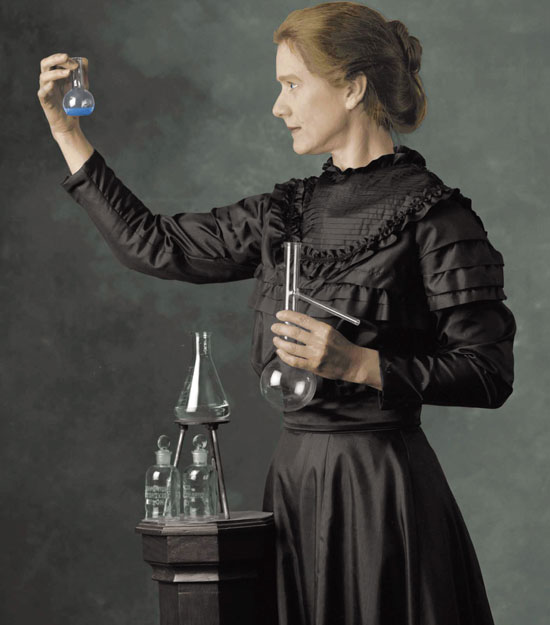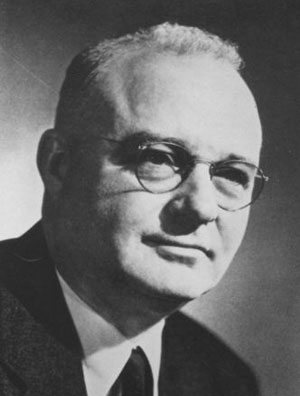10 inventors died because of
Many scientists have been clean and enthusiastic about inventing things for humanity. But it was that "baby boy" who stole their own lives.
1. Marie Curie

Marie Curie (1867 - 1934) was a French Polish scientist. This woman has pioneered the field of radioactivity research, discovering a range of new chemical elements, including Radium and Polonium.
In 1903, she and her husband Pierre Curie received the Nobel Prize. At that time, the cell destruction properties of radioactive elements were not detected, so during work Marie Curie did not use any protective measures. Sometimes, she even left the test tube containing radioactive elements in her drawer or pocket. After a long time of exposure to radioactive substances, Marie Curie died on July 4, 1934 and the cause was thought to be due to pernicious anemia. At that time, she was only 67 years old. Currently, the death of this famous female scientist is determined by exposure to radioactive material.
2. Thomas Midgley

Thomas Midgley (May 18, 1889 - November 2, 1944) was an American chemist. He is well known in the scientific community for inventing leaded gasoline and chlorofluorocarbon synthetic chemicals (CFC). Because of his inventions, Midgley was also said to be 'the person who has the most deaths in history'.
Later he suffered from polio and severe lead poisoning, bedridden. In order to cope with his illness, Thomas Midgley invented a smooth rope and pulley system that helped me get out of bed more conveniently. But it was this invention that robbed the scientist of his life. At the age of 55, he suffocated to death due to entanglement in complicated wires and pulleys on the bed.
3. Parry Thomas

Parry Thomas is a famous Welsh driver and engineer. He always dreamed of breaking Malcolm Campbell's driving speed record. Thomas himself designed a car to make dreams come true. Finally, the car is completed. He named his 'pet' Babs. Thomas had groundbreaking improvements to the car, especially the design of the open car chain when connecting the wheels to the engines.
On April 27, 1926, Parry Thomas broke the world record for driving speed, the next day he continued to push the speed to 170km / h. A year later, Malcolm Campbell broke Thomas's record. When he was trying to set up a new record, the car chain suddenly broke, part of the chain slammed into him, causing him to die on the spot.
4. William Bullock

William Bullock is an American inventor. In 1863, he invented a type of rotary printer that works at high speed, high efficiency.
This invention created a radical revolution for the printing industry of mankind. At one time when he was repairing the printer, he ventured one foot under the machine, intending to push the pulley into place. Unfortunately, his leg was injured and led to necrosis. William Bullock died while undergoing leg amputation.
5. Otto Lilienthal

German engineer Otto Lilienthal (May 23, 1848 - August 10, 1896) was a pioneer in the field of civil aviation in the world. He was also the first person to successfully design a roller coaster. Therefore, Otto was praised by everyone as the "flying king".
Many newspapers and magazines at the time published the image of Otto Lilienthal flying. This inventor turned the dream of successfully crafting a tool to fly through the air for the rest of mankind's life. But that success paid too much. In 1896, when Lilienthal was carrying out his flight, the glider encountered a great wind and became uncontrolled, crashing to the ground. The inventor was seriously injured. The next day, he died. During his death, Otto told Gustav, his younger brother, "Little sacrifices are needed."
6. Franz Reichelt

Franz Reichelt is an Austrian seamstress. He designed a cloak that works like a parachute today and confidently declares that, when worn, people can walk quietly, even flying in the air.
To prove the miraculous effect of this invention, Reichelt did a pretty foolish experiment. He put on his 'masterpiece' and jumped from the top floor of the Eiffel Tower down. At that time, a lot of people and photojournalists gathered here to witness the incident. But unfortunately, Reichelt's work did not work as miraculously as he had hoped. The experiment completely failed and the tailor lost his life after falling straight from above.
7. Karel Soucek

Karel Soucek is a Canadian stuntman. He invented a 'hidden chamber' , ie capeun, sitting in and flying from above Niagara Falls. Since then, his name began to "float like alcohol" . During this performance, Soucek was slightly injured but not life-threatening.
In 1985, he convinced a generous company to fund his other adventurous experiment in Texas. This time, Soucek rolled freely along the waterfall. Below the waterfall is a reservoir of water. But things didn't go smoothly, luckily like last time. When receiving water, Soucek did not fall into the lake and hit the wall. The cape broke, and its owner was seriously injured and died the next day.
8. Cowper Phipps Coles

Cowper Phipps Coles was an elite Royal lieutenant of the British Royal before. During the Crimea war, he invented a turret for warships. After the war ended, Coles was granted a patent for this invention. When he realized his "pet" was very well used by the Royal Navy, he tried to make use of that design to create his own ship. Coles intends to make a 'stormy deck' , increasing the focus of the ship.
On September 6, 1870, the ship HMS Captain of Coles officially launched, taking with him and more than 500 sailors to join the first departure. But the disaster struck when the ship was overturned, causing him and his companions to fall into the water and die.
9. Alexander Bogdanov

Alexander Bogdanov is a Russian physicist, philosopher, economist, science fiction novelist and revolutionary. One of his outstanding experiments was to re-create the body, in order to achieve the goal of 'perfecting copper' through blood transfusion.
He gave blood to many famous people of that time, among them the sister of Lenin. Later, Bogdanov made a very reckless decision: to give blood to himself. Blood is taken from a patient with tuberculosis and malaria. Soon, this multi-talented scientist died due to a virus infection.
10. Henry Winstanley

Henry Winstanley is a famous British architect and engineer. He was the one who designed the first Eddystone lighthouse and greatly appreciated his work. Henry Winstanley believes in the certainty of the lighthouse so much that he desires to remain in it at the time of the 'greatest storm in history' .
In November 1703, Henry Winstanley's bizarre wish came true. Eddystone sea lamp has suffered the brutal destruction of a terrible storm in England. At that moment, Winstanley is conducting some remodeling inside Eddystone. The sea lamp has completely collapsed, taking Winstanley's life and five other people inside it.
Reference: Listvese
- Chinese inventors 'suck' millions of fans through crazy inventions
- The legendary gunman AK-47 Kalashnikov died
- 'Engineer' in the African field
- 10 talented young inventors under the age of 18
- Nobel - Great aspirations
- 10 interesting things about AK gun father
- 8 inventors were killed by their own inventions
- 10 youngest inventors in the world
- In what circumstances do inventors form their great ideas?
- 10 products that change the lives of anonymous inventors
- The inventors unveiled pants of condoms
- More than 300 chickens died of heart attack because ... terrifying this language
 The most famous scientific failures in history
The most famous scientific failures in history Mysterious genius mechanic and the machine froze time
Mysterious genius mechanic and the machine froze time The son carries the 'bad gene' of genius Albert Einstein
The son carries the 'bad gene' of genius Albert Einstein Isaac Newton
Isaac Newton